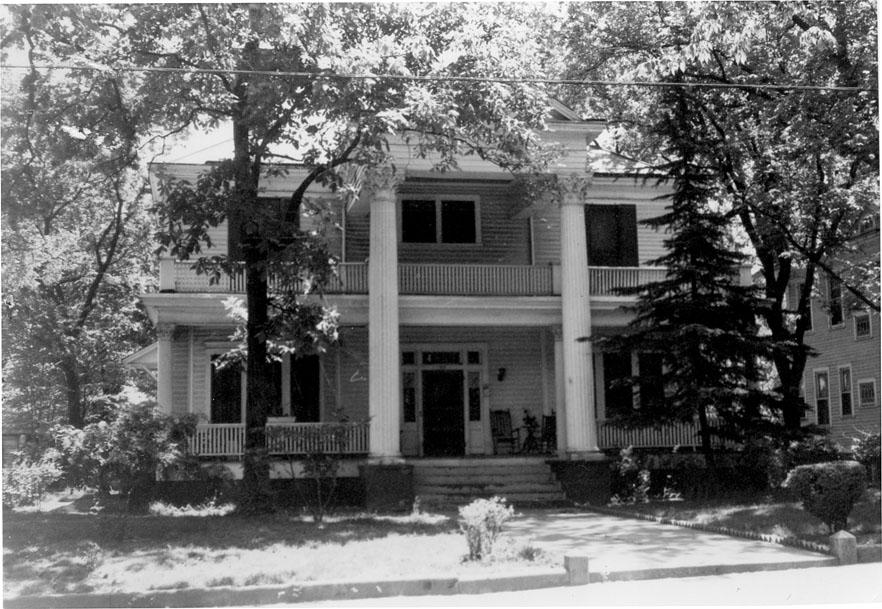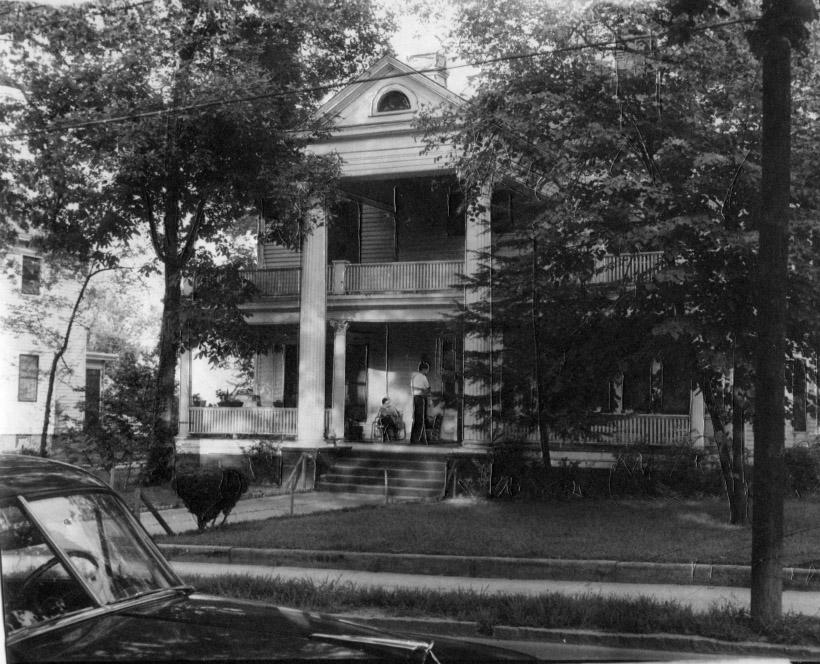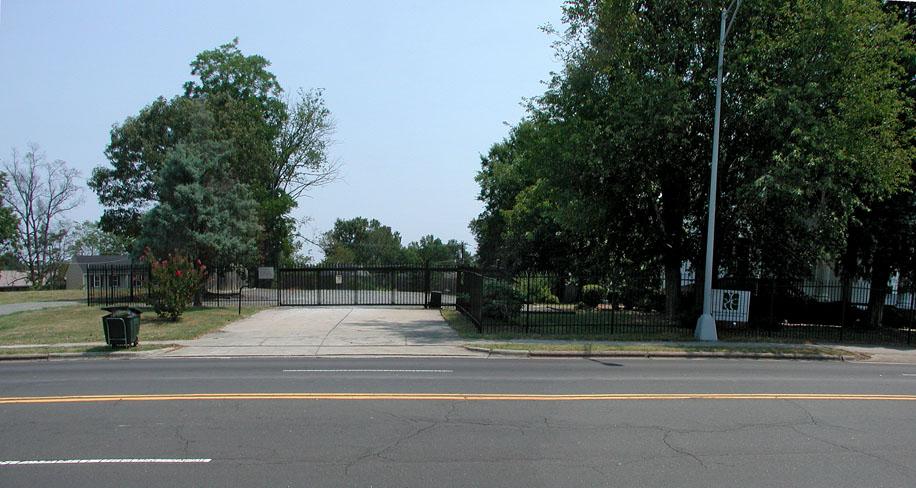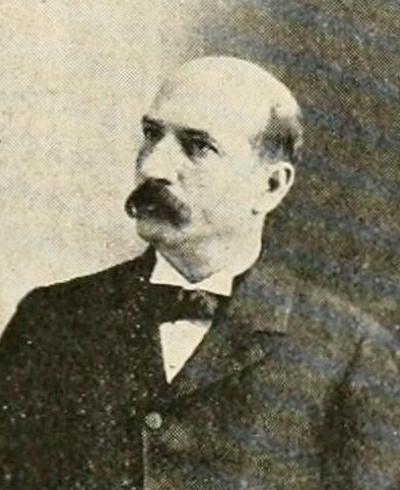Looking east, 1964.
The John M. Manning house on Dillard St. was likely built during the late 1890s. Manning was born in 1857 and went to college at UNC, medical school at UVA, and did his residency at Bellevue. He initially moved back to Pittsboro, but came to Durham in 1888 to practice medicine.
The three Manning brothers were rather remarkable. The other two brothers were Isaac and James. Isaac, also a physician, became Dean of UNC School of Medicine in 1905. James Manning, whose house still stands on North Mangum St., was a prominent local lawyer in Durham who went on to become a judge, state senator, and NC state Attorney General.
By the 1890s, Dr. John Manning had become the county health officer, and made an early plea that the city needed to install a sewer system rather than worrying about paving streets, as typhoid epidemics had become yearly occurrences.
Interestingly, Manning ran the first 'methadone clinic' (not using methadone, obviously) out of the health department for lifelong morphine addicts who could not longer get morphine after the 1915 Federal narcotics laws. He would administer "maintenance doses" so addicts would not enter severe withdrawal. The clinic was evidently overrun with people seeking help - one patient was a Confederate Civil War veteran who had used morphine since the war. The clinic had to shut down after two months, and many months later, Manning was indicted by the Federal government for breaking narcotics laws. The Durham-Orange medical society, Lincoln Hospital, and the City council came to Manning's defense. At his trial, he stated that he had contacted the Federal government about how to deal with the problem of addiction once the laws went into effect and received no reply. He thus took it on himself to fix the problem; he was immediately acquitted.
His service evidently put him in good stead with the community, as he was elected mayor in 1921 and served until 1929. (7 mayors lived on Dillard St.)
One particular insight into the urban planning decisions of the 1920s: Dr. Manning was strongly opposed to one-way streets in downtown, but a fan of parking; he proposed turning Rotary Park, next to the Academy of Music into a parking lot. His proposal was defeated.
Dr. Manning died in 1933. I'm not sure who the house passed to next, but this house, along all of the houses on the east side of Dillard, as well as those up Holloway to the railroad tracks, were slated to be demolished by urban renewal. City council member and later mayor Charles Markham fought hard to save these houses (Markham lived two doors down.)
(Courtesy Bob Blake)
So the Manning house was spared the city wrecking ball. Unfortunately, it didn't survive another wrecking ball, as it was demolished sometime between 1964 and the mid 1970s. It is now the parking lot for the Durham Crisis Response center at 206 N. Dillard.
One Manning descendant, Isaac's grandson, still practices medicine in Durham: Dr. Stuart Manning, president of Research Triangle Occupational Health Services. (With whom I used to practice.)





Comments
Submitted by coco (not verified) on Thu, 8/30/2007 - 10:28pm
The Manning family is very impressive. It is such a shame that Dr. John Manning's beautiful home has turned into a parking lot - as he had wished for the rotary site. Where did all the fine details go to when it was demolished?
Submitted by toby (not verified) on Fri, 8/31/2007 - 1:09pm
Great post -- mixes photos and history nicely. One apparent typing error: near the end of the post, you write "It is now the parking lot for the Durham Crisis Response center at 210 N. Dillard." I assume you meant "206".
Submitted by Gary (not verified) on Fri, 8/31/2007 - 1:12pm
Thanks for catching my error, Toby - I've fixed it.
GK
Submitted by vespasara (not verified) on Thu, 12/16/2010 - 3:49am
Linthicum & Linthicum list this house as one of theirs in a 1905 Manufacturers Record. I wish there were more images of it so I could get a good look at it to compare with their other residences!
Add new comment
Log in or register to post comments.